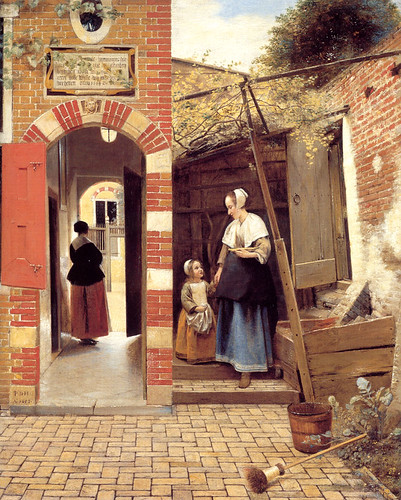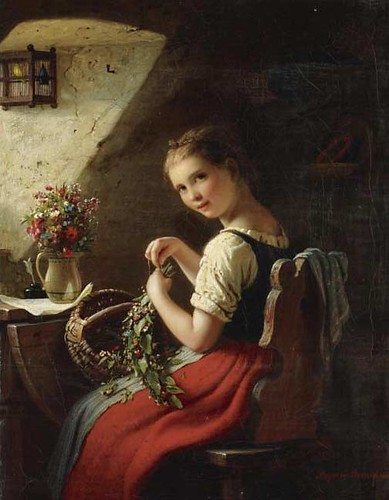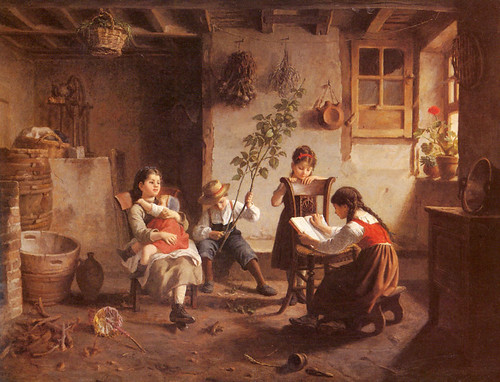Theodore Gerard (Belgian, 1829-1895) The Farmer’s Child (1861) Oil on panel 33 BY 22IN. Private collection.
The French word “genre,” directly translated as “kind” or “type,” is used to describe a variety of paintings. As a result the use of the term “genre painting” can be confusing.
Jozef Israëls (Dutch, 1824-1911) Awaiting the Fisherman’s Return. Oil on canvas. 32 1/2 BY 44 3/4IN. Private collection. A painting that depicts a scene of everyday life is generally considered a genre painting, and can include contemporary figures, urban life or peasant scenes. In her book, Keywords of Nineteenth-Century Art, Dr. Christine Lindey describes what sets a genre painting apart:
It did not aspire to the elevated scale, generalised effects or high moral truths of the grand manner; rather it sought to be entertaining (and often humorous), anecdotal and sentimental. Moreover, it depicted in telling detail non-heroic, anonymous, “ordinary” people going about their daily lives, whether they be contemporary and “real,” historical or literary.
(Christine Lindey. Keywords of Nineteenth-Century Art. p. 105)
Genre paintings originate from Dutch and Flemish painting traditions going as back as the fifteenth century. In the seventeenth-century, Dutch painters like Jan Steen (1626-1679) and de Hooch (1629-1684) took common genre scenes to a new level of refinement through their nuanced use of symbols (e.g. an discarded slipper as sexual innuendo) and highly skilled treatments of light and materials.
Peiter de Hooch (Dutch, 1629-1684) The Courtyard of a House in Delft (1658) Oil on canvas.
The greatest criticism of genre paintings came from painters following Italian and French traditions of art that emphasized large scale works of historical or mythological scenes. In his assessment of Gustave Courbet, the father of Realist painting, Pierre-Joseph Proud’hon, an academic painter, wrote:
It would be no truer to call him a genre painter, like the Dutch and Flemish, whose paintings, though pleasant or comic, are insubstantial; they rarely go to the heart of things, reflect no philosophical concerns, and reveal more imagination than observation . . .
(Harrison and Wood. Du principe de l’art et sa distination social. Christine Lindey, trans. p. 408)
Despite the lack of credibility they often received, there were many nineteenth-century genre painters. During the first half of the century, their works appeared more often on the private market than in public exhibitions. By the end of the century genre painting had gained greater credibility and regularly appeared in the annual Paris Salon.
Johann Georg Meyer von Bremen (German, 1813-1886) Making a Bouquet. Oil on canvas. Private collection.
Paul Seignac (French, 1826-1904) The Reading Lesson. Oil on panel. 19 BY 26 1/4IN. Private collection.





Hi This is chan from India, I Love Paintings. This site is wonderful to view Paintings. I Like U’r Collection, Can u give update for me everyday. Pls permit me to view u’r site.